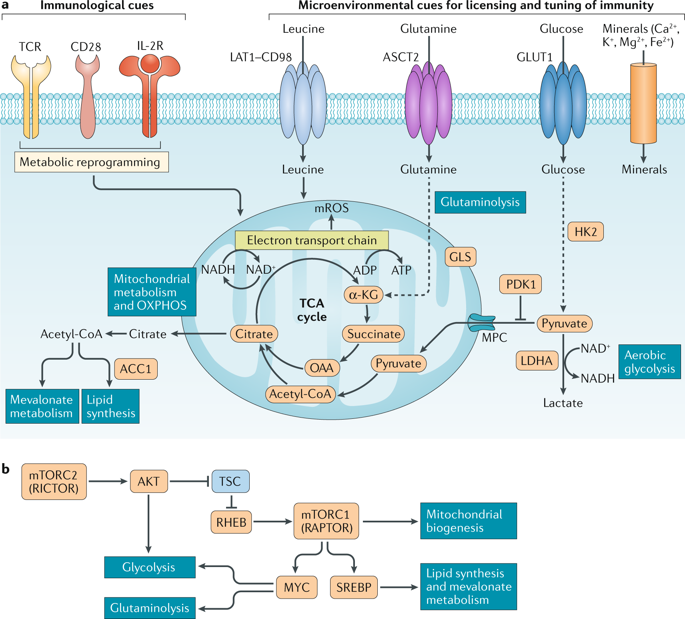当前位置:
X-MOL 学术
›
Nat. Rev. Immunol.
›
论文详情
Our official English website, www.x-mol.net, welcomes your
feedback! (Note: you will need to create a separate account there.)
Metabolic coordination of T cell quiescence and activation.
Nature Reviews Immunology ( IF 67.7 ) Pub Date : 2019-08-12 , DOI: 10.1038/s41577-019-0203-y Nicole M Chapman 1 , Mark R Boothby 2 , Hongbo Chi 1
Nature Reviews Immunology ( IF 67.7 ) Pub Date : 2019-08-12 , DOI: 10.1038/s41577-019-0203-y Nicole M Chapman 1 , Mark R Boothby 2 , Hongbo Chi 1
Affiliation

|
Naive T cells are actively maintained in a quiescent state that promotes their survival and persistence. On antigen stimulation, T cells exit quiescence to initiate clonal expansion and effector differentiation. Initial studies focused on the immune receptors and transcriptional regulators involved in T cell quiescence and activation, but recent findings highlight cell metabolism as a crucial regulator of these processes. Here we summarize these intrinsic metabolic programmes and also describe how cell-extrinsic factors, such as nutrients and regulatory T cells, directly and indirectly balance quiescence and activation programmes in conventional T cells. We propose that immunological cues and nutrients license and tune metabolic programmes and signalling networks that communicate in a bidirectional manner to promote quiescence exit. Understanding the programmes that regulate T cell quiescence will be key for developing novel approaches to modulate protective and pathological T cell responses in human diseases.
中文翻译:

T细胞静止和活化的代谢协调。
幼稚T细胞被积极地维持在静止状态,从而促进其存活和持久性。在抗原刺激下,T细胞退出静止状态以启动克隆扩增和效应子分化。最初的研究集中在涉及T细胞静止和激活的免疫受体和转录调节剂上,但最近的发现强调了细胞代谢是这些过程的关键调节剂。在这里,我们总结了这些内在的代谢程序,还描述了细胞外在因素(例如营养物质和调节性T细胞)如何直接和间接地平衡常规T细胞中的静止和激活程序。我们建议免疫学线索和营养素许可并调整以双向方式进行交流以促进静态退出的代谢程序和信号网络。
更新日期:2019-08-12
中文翻译:

T细胞静止和活化的代谢协调。
幼稚T细胞被积极地维持在静止状态,从而促进其存活和持久性。在抗原刺激下,T细胞退出静止状态以启动克隆扩增和效应子分化。最初的研究集中在涉及T细胞静止和激活的免疫受体和转录调节剂上,但最近的发现强调了细胞代谢是这些过程的关键调节剂。在这里,我们总结了这些内在的代谢程序,还描述了细胞外在因素(例如营养物质和调节性T细胞)如何直接和间接地平衡常规T细胞中的静止和激活程序。我们建议免疫学线索和营养素许可并调整以双向方式进行交流以促进静态退出的代谢程序和信号网络。





















































 京公网安备 11010802027423号
京公网安备 11010802027423号